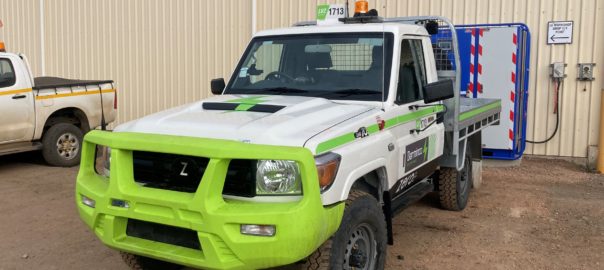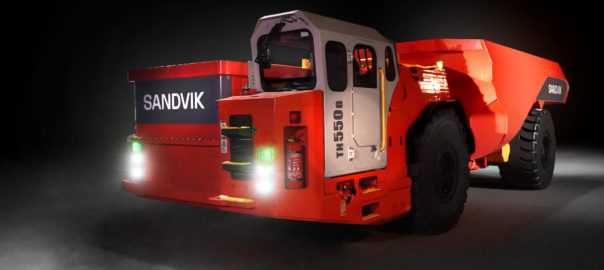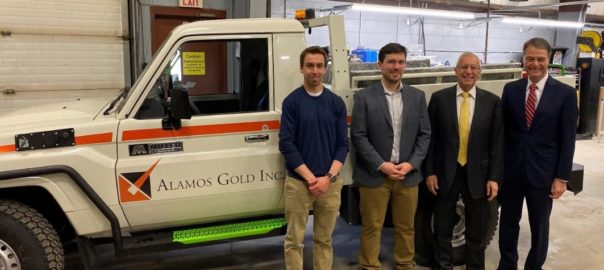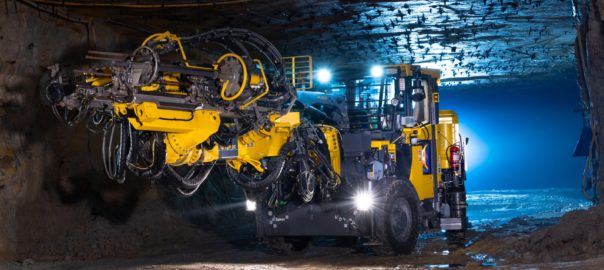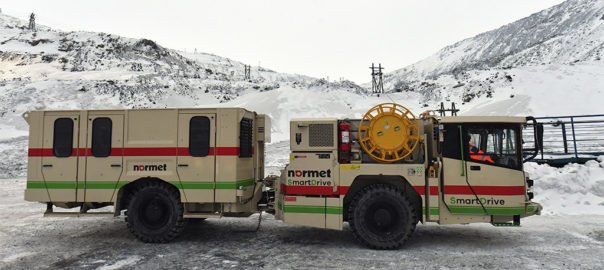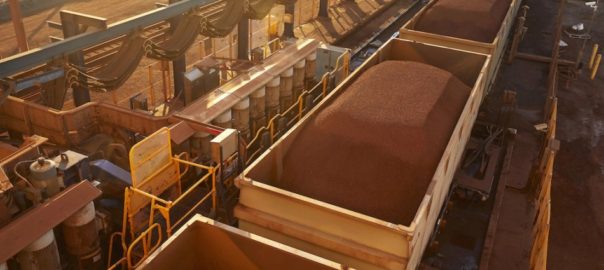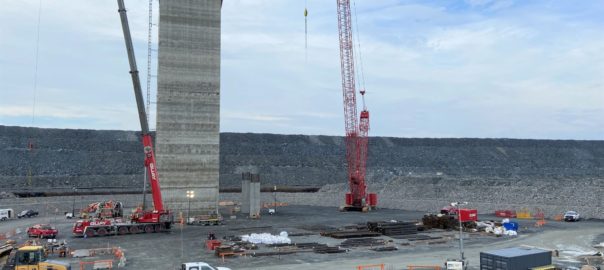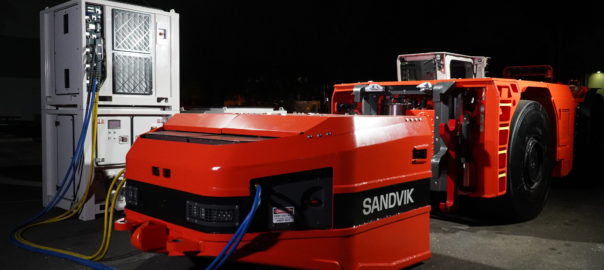Zero Automotive is one of several Australia-based companies looking to supply the clean and green light utility vehicles the domestic hard-rock sector requires over the next decades to achieve crucial sustainability goals while retaining high productivity levels.
Thanks to the support of a significant copper-gold miner in Australia, its membership of the Electric Mine Consortium (EMC) and METS Ignited backing, the company finds itself in a strong position to deliver these machines against a backdrop of supply chain issues and ever-evolving safety and regulatory requirements.
“We’ve got commitments for six machines altogether and are in the process of offering our production version to the market,” Dan Taylor, Business Development Manager for Zero Automotive, says.
The first and second units are already running at OZ Minerals’ Carrapateena copper-gold mine in South Australia – Zero Automotive’s home state.
The first machine – a ZED70 Ti™ battery-electric light vehicle – was originally delivered to the mine at the back end of 2020 for testing. After successful trials, the company acquired this unit outright and, in early-2022, added a second Zero Automotive ZED70 Ti to enable its workforce to familiarise themselves with the capabilities and charging methodology that come with electric light utility vehicles.
Since then, the company has delivered a third ZED70 Ti conversion to Barminco, which is now on site at its client IGO Ltd’s Nova nickel-copper-cobalt operation in Western Australia. This vehicle is the first single cab conversion developed by Zero Automotive and will be deployed to site foremen to allow the mining contractor to gain a good understanding of its capabilities.
All three of these machines – and the three to follow – are based off battery-electric conversions of the Toyota LandCruiser 79 Series, a vehicle that has been part of the Australian mining landscape for many years.
The modular nature of the Zero Automotive platform enables its long-life battery energy system to be reused in multiple chassis, lowering the total lifecycle cost of the fleet as well as the cost of Scope 1 emissions, according to the company.
They also include dual AC-DC charging with the CCS Combo2 connection, which is becoming increasingly standardised in the mining space.
Data and feedback from the second OZ Minerals machine and the initial Barminco vehicle will be fed back into the EMC ecosystem under the Light and Auxiliary Equipment Working Group as part of the consortium’s continual improvement and knowledge sharing remit.
The EMC said of the consortium’s ongoing light and auxiliary equipment electrification ambitions: “Converting light and auxiliary vehicles as rapidly as possible to electric is key to the industry building the broader understanding and familiarity with electric equipment and infrastructure that will accelerate adoption across all aspects of operations.”
The EMC is a growing group of over 20 mining and service companies driven by the imperative to produce zero-emission products for their customers and meet mounting investor expectations. The objective of the EMC, backed by METS Ignited, is to accelerate progress toward the zero-carbon and zero-particulate mine.
The following three machines are also expected to be deployed to EMC members, with METS Ignited agreeing to provide some A$400,000 ($297,938) of funding towards the diesel-to-battery conversion projects outside of the vehicles already delivered to OZ Minerals.
“The key thing with all of these vehicle deployments is the ZED70 Ti being able to do the job the miners need to perform safely and reliably, getting the associated charging infrastructure right and working with key stakeholders on the change management process,” Dave Mitchell, founder and CEO of Zero Automotive, says. “Operators also need to get used to the power under the hood and how to maximise the battery re-charging capabilities when going down ramp.
“As a matter of course, we train up and educate the sites about the best way to utilise these vehicles,” he said.
To this point, the two prototype vehicles already operating out at Carrapateena have shown that they can work for a typical shift without requiring a re-charge and can then utilise the battery’s AC/DC-DC fast-charge option during shift changeover to enable another user to run the machine for the following shift.
The use of LTO (Lithium Titanate Oxide) battery chemistry and a 60-kWh battery capacity has been behind this performance. This electric motor can generate continuous power of 75 kW and peak power of 134 kW, plus 358 Nm of continuous torque. These values will be increased to 100 kW, 200 kW and 520 Nm (1,200 Nm peak) for the production version.
To this point, the power dimension has often been the main metric quoted with any battery-electric machine, but Taylor pointed out that safety and regulatory considerations were often the biggest barriers to overcome in terms of getting machines operating at underground mines – a hurdle that Zero Automotive has cleared.
“We were able to successfully commission our second ZED70 Ti for OZ Minerals within two days of the machine arriving on site,” he said. “A lot of people are putting out offerings for light utility vehicles, but the required risk analysis in terms of deploying a vehicle underground has not been successfully worked through. This is rightfully a high bar to clear.
“We address any safety or regulatory considerations during our design process – not when the machine is on site – to make sure that operators can start using them quickly.”
Mitchell adds: “The user case is what we are focused on. That has allowed us to scale our offering quickly and ensure our clients can start running the machine underground as soon as they have it on site.”
Zero Automotive is expecting to deploy the other three machines on its books to the same companies (OZ Minerals and Barminco), but the final two machines of the six to be delivered will be under a revised platform to the original ZED70 Ti.
“It will be a platform that is designed from the ground up that incorporates the desired features and learnings from the first conversions, but we will simplify it to reduce complexity, weight and cost,” Mitchell said. “We’re sticking with the same battery configuration – which has proven itself in terms of power, safety and longevity – but we’re adding some auxiliary power outputs and ensuring the machine is multi-purpose.”
The latter element is tied to the company’s medium-to-long-term ambitions, which include the potential to supply battery-electric machines specific to the extended range space too.
For now, Zero Automotive is focused on getting its machines underground at hard-rock operations, ensuring operators and mining companies start realising the productivity and emission benefits that come with these zero-emission conversions.







